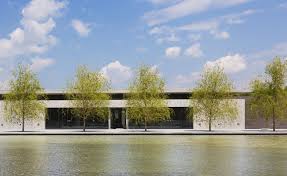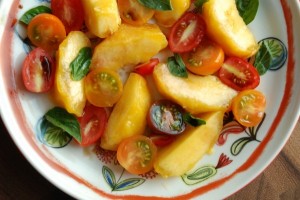 Back before sewing was relegated to an art form, the Singer Sewing Machine Company was a heavy hitter. Robert Sterling Clark, who inherited major money from his grandfather, Isaac Singer’s business partner, left Yale with a degree in engineering and spent a lot of time in China. In 1911 he settled in Paris and began collecting art, joined in this pursuit by his wife, Francine, after they married in 1919. Money and taste, a winning combo, enabled the couple to acquire Italian, Dutch and Flemish Old Masters and later broaden their collection to include works by John Singer Sargent, Winslow Homer and George Inness as well as Renoir and Degas. They also collected sculpture, serious silver and much else.
Back before sewing was relegated to an art form, the Singer Sewing Machine Company was a heavy hitter. Robert Sterling Clark, who inherited major money from his grandfather, Isaac Singer’s business partner, left Yale with a degree in engineering and spent a lot of time in China. In 1911 he settled in Paris and began collecting art, joined in this pursuit by his wife, Francine, after they married in 1919. Money and taste, a winning combo, enabled the couple to acquire Italian, Dutch and Flemish Old Masters and later broaden their collection to include works by John Singer Sargent, Winslow Homer and George Inness as well as Renoir and Degas. They also collected sculpture, serious silver and much else.
Flash forward to the 1940s, when the Cold War caused the Clarks to became concerned about the safety of their collection. Fearing that New York City might be attacked, instead of giving their collection to the Metropolitan Museum of Art as many thought would happen, they turned to Williamstown, MA, where Sterling (never known as Robert) had ties via his father and grandfather, both trustees of Williams College. The Sterling and Francine Clark Institute, aka ” The Clark” opened to the public in1955 and was a huge hit, one of many factors making the Berkshires a cultural mecca.
Most of The Clark had been closed for a few years for a major renovation. The new version opened on July 4, 2014 to accolades from critics far and wide. A new building has been added, the old one renovated to provide more space, the landscape reconfigured and many trees planted. We went the day after the opening, marveling at all and noting a few minor kinks (that may have been resolved by now.)
Signage was vague; should you push or pull that door? Where are the restrooms? The guards needed a bit more orientation and the new gift shop isn’t going to sell much merch if they display such a tiny number of items, almost all untagged. Visitors tend to be put off when they admire a necklace but don’t have a clue as to the price. We hiked uphill (an easy, lovely walk) to the Lunden Center at Stone Hill (part of the Clark) to see the David Smith Raw Color exhibit and have lunch at the outdoor cafe with its knock-your-socks-off view. Here’s a link to the glowing review of the Clark by the New York Time’s art critic, Roberta Smith (hoping it works) :
And here is a version of the Heirloom Peach and Tomato Salad I enjoyed at the Stone Hill Cafe. It’s easy and especially great now when both fruits are in season. This serves four.
1/4 cup thinly sliced red onion (As a non-raw onion girl I’d omit this but it’s personal)
1/2 pound ripe peaches, pitted and cut into wedges
1/2 pound heirloom tomatoes, cut into wedges (if heirlooms aren’t around, feel free to substitute good, ripe “contemporary” tomatoes)
1 tablespoon sherry vinegar
1 1/2 teaspoons extra-virgin olive oil
1 teaspoon honey
1/8 teaspoon salt
1/8 teaspoon freshly ground black pepper
1/4 cup (1 ounce) crumbled feta cheese
2 tablespoons small basil leaves or torn basil
Combine first 4 ingredients in a large bowl.
Combine vinegar, olive oil, honey, salt, and pepper in a small bowl, stirring with a whisk. Drizzle vinegar mixture over peach/tomato mixture; toss well to coat. Sprinkle with cheese and basil.
Serve and, if possible, take yourself to Williamstown to bask in the whole Clark experience.




Mari–I didn’t realize that you went to the Clark recently! I can’t keep up with all you do!!! I look forward to hearing whether you think that they have much more space for art and whether you think it was worth the expense.
You should send the Clark your comments about the gift shop. That sounds ridiculous.
I’m sure the museum will get their act together soon. In spite of all the problems,
it sounds like a very interesting trip.
I’ve been going to the farmer’s market lately and the peaches and tomato’s have been
fabulous. I will be making the salad for lunch today. Did you ever try it with burata?
Yumm! Thanks!
Thanks for your insights into The Clark – wouldn’t have learned of it otherwise.
Their web site displays such a wide range collection: http://www.clarkart.edu/